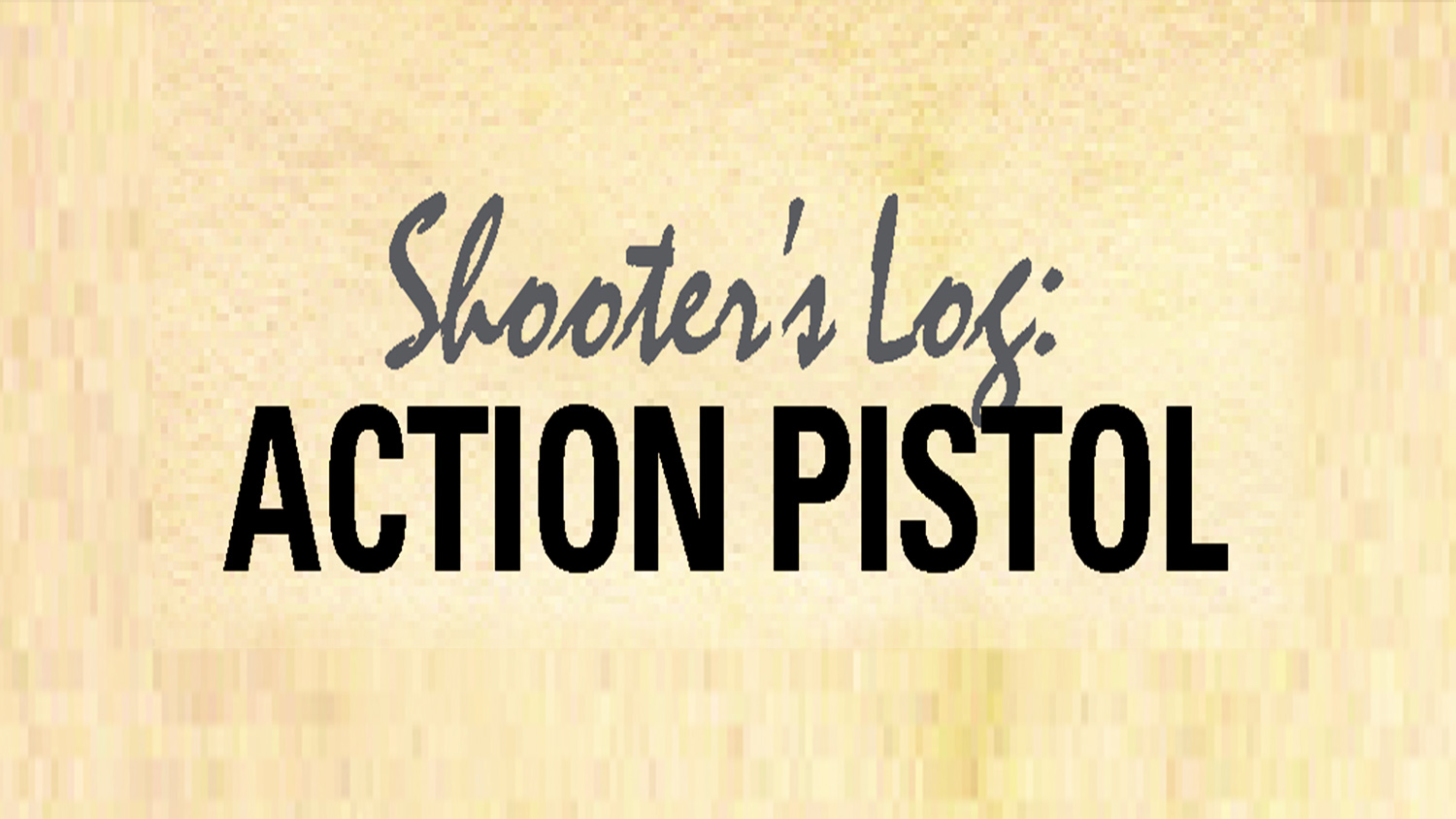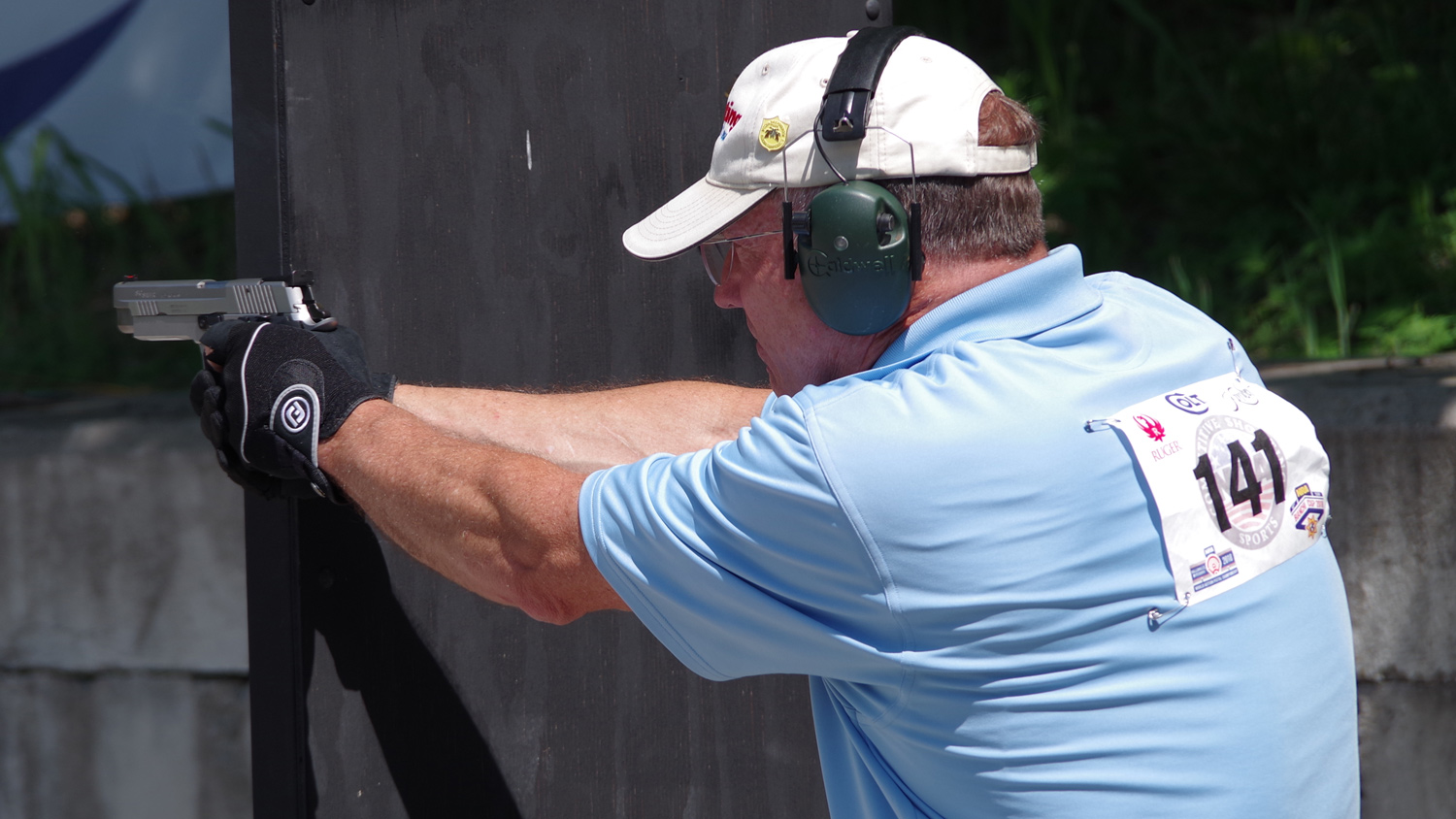
Editor’s note: Multi-gun competitor and former Shooting Sports USA Managing Editor Chip Lohman shares some ah-ha! moments discovered during preparation for this year’s NRA Bianchi Cup Championship as an iron-sight production shooter.

With the benefit of having interviewed many of the Masters for Shooting Sports USA, I should have been able to move past Sharpshooter class. What follows is my interpretation of what the pros have been telling us and what finally clicked for me. Your mileage may vary.
Keep My Mind Off the Prize
As rifle champion Nancy Tompkins once shared, “There are 600 shooters here. If winning first place is the only way you’re going to have fun, there are going to be a lot of unhappy people this week.” This idea led me to set realistic goals for Bianchi, which became—192 perfect sight pictures (the total number of shots fired in the match). So, I did NOT look up my old Bianchi scores to set goals for 2018, and I didn’t calculate how many points I needed to move up a classification. Instead, I focused on what I had direct control over, which was the sight picture and the trigger. This approach also helped clear my Kevin Costner “mechanism” (brain) of a too-detailed shot sequence. More on this abbreviated “to-do” list in a minute.

No Sighters
Unlike Service Rifle competition at Camp Perry, there are no warm-up shots at Bianchi. To avoid the false comfort of knowing that I had hundreds of follow-up practice shots if I blew the first one, I began each training session with a “this-is-the-real-thing” course-of-fire in order to create a sense of jeopardy for that first shot—excuse me—sight picture.
Shooting Faster Without the Timer
My biggest mistake in years past was the belief that I needed to practice all shooting within the given time limits. I know, I know, “Learning how to miss fast, doesn’t help.” So I re-learned what we’ve all been taught: “Slow is smooth and smooth is fast.” It works. I used the timer as a START stimulus, but without the STOP chime. And, as everyone else on the planet already knows, I began to carve out muscle memory tracks (actually brain tracks) for a perfect sight picture and trigger press. In time, the tracks became deeper, and my technique became smooth … and FAST(er).

As a good friend taught me, if you can’t see fast, you can’t shoot fast—accurately at least. But that’s another upcoming article on vision for seniors. [Be sure to check out the August 2018 edition of the digital magazine to read the article on vision by Dr. Norman Wong.]
When Does Your Sight Picture End?
Another gold nugget came from a group session with multi-year Bianchi champion Rob Leatham when he asked us: “What are you looking at when you shoot?” We learned that the answer should be—the front sight—rising. That approach (when I remember) keeps me focused on the front sight long enough to avoid moving on to the next sight picture prematurely.
How Bullseye Hurt Me
With thirty years of muscle memory built around shooting Bullseye Pistol (now called “Precision” Pistol) with one hand, I slipped into bad habits for Action Pistol by treating my support hand as a stage prop. Two friends and USPSA shooters taught me to grip harder with my support hand so that my trigger press didn’t move the front sight. Another take-away came from one of World Champion Jerry Miculek’s sessions where he said “At the end of training, your support hand should hurt.”

Shrinking My Point-of-Aim
Knowing that I wasn’t going to be tested on my target-stapling skills, and also wanting to narrow my focus to the 4-inch X-ring of the Bianchi A2 target, I did what I saw World Champions Carl Bernosky, Doug Koenig and others do—I bought a roll of 4-inch black labels from Uline.

This was a time-saver at the practice range and also put my focus where it belonged. One day I noticed that my groups had pretty much shrunk to within the 10-ring. I can hear my mentors saying: “We told you that years ago!”
Non-Fiction Rehearsals
Something I learned with the 3-minute prep time for Service Rifle matches is that there is such a thing as muscle memory for setting-up. Similarly for my Bianchi prep, I tried to emulate match conditions during practice to avoid the little sweat bombs that occur, for example, when you can’t find something in your range bag as you’re being called to the line. During practice I would do things like load magazines from my pouch—not the table, never shoot without a concentrated sight picture, etc. I also repeated the same routine of: Remove-ring-insert-ear-plugs-put-on-glasses-then-earmuffs-mount-holster-belt-and-apply-hand-spray … every time I shot. The result was committing all that preparation “noise” to an unconscious routine that freed my mind for more important things.

Make Trouble
Similar to the point above, I created artificial delays during practice to simulate wait times on match day, such as making an extra trip to the trash can, sweeping brass or unnecessarily re-stuffing mags between strings just to slow down my practice cadence. (Think about how some golfers prepare for 18 holes at the driving range by hitting 100 golf balls in 15 minutes, while never walking away from their position and re-addressing the ball on the tee. Same idea …)
What’s This—Confidence?
Champion rifle shooter Ernie Vande Zande shared in an interview that he noticed giving speeches in high school was sometimes nerve-racking, and sometimes not. He eventually associated the better speeches with preparation. This year’s additional practice time had the same calming effect on me.
Note to Self: Add outdoor matches to my practice schedule. (Guess what happens to a fiber optic front sight when you move from 100 percent indoor practices to an outdoor range. Another ah-ha! moment.)
Shot Sequence, the Good Kind
Having finally committed to rehearse, train and select one or two things to focus on during practice (like watching the front sight rise during timed fire)—I was able to replace a lengthy shot sequence with a much shorter “to-do list” consisting of: 1) proper hand placement during the draw that sets me up for a natural point of aim, followed by 2) a perfect sight picture, 3) a strong grip and 4) a trigger press that doesn’t disrupt all that effort. By focusing on what was attainable, rather than the desired outcome, it seemed like some of the adrenaline was replaced with an Ernie Vande Zande-like confidence.

All this led to improving my score by 230 points—not earth-shaking, but a good start on 2019. I also appreciate that I have no external expectations placed on me; no record to defend; and no sponsors to please.
Being an amateur has its advantages.
What’s in Your Range Bag, Chip Lohman?
Stainless steel SIG Sauer X5 Allround 9mm, 5-inch barrel semi-auto pistol; reloads with Hornady’s 124-grain, .356 HAP bullets, 5.1 grains of Alliant Power Pistol powder, Federal Small Pistol primers and Rebrassers brass; Brian Enos Slide Glide gun lube; GRRRP Plus grip enhancer; computer length (20 inches) prescription glasses—all organized in a First Tactical range bag.

Says Chip: “After trying two others, I like the First Tactical design because it’s modular, rugged and most of all, narrow for hanging it on my shoulder. One of the innovative designs includes carry straps that store rolled-up targets.”


































